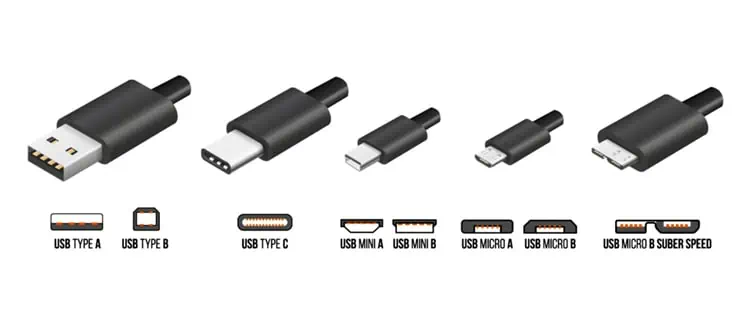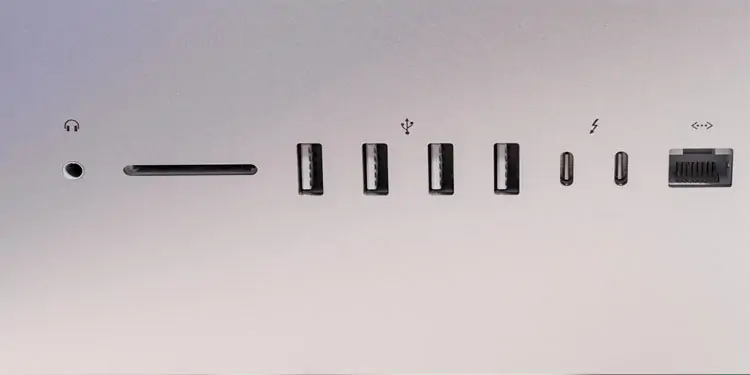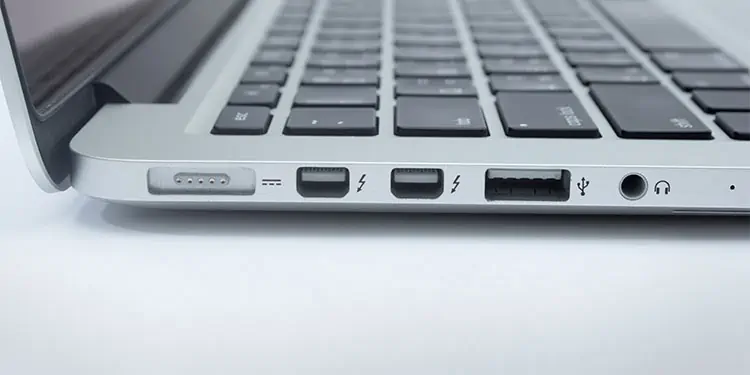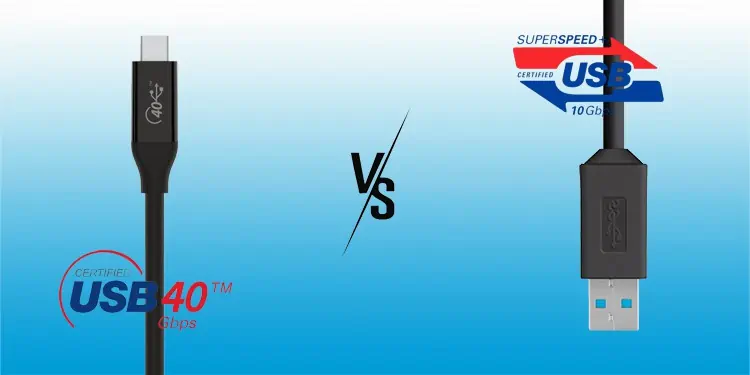The USB scene has gotten very confusing over the years thanks to the (widely criticized) naming convention. Once you get past the naming, the changes between the various iterations of USB 3 and USB4 can still be tough to navigate.
Some factors such as the USB-C connectors have stuck, whereas others like the max bandwidth and resource distribution have improved significantly.
As such, we’ve detailed the differences between USB 3 vs 4, some similarities, as well as other related queries in this article.
What is USB 3?
USB 3, or rather USB 3.0 specifically, is a USB standard released by the USB Implementers Forum (USB-IF) on Nov 12, 2008. This specification introduced the SuperSpeed transfer mode, which massively bumped up the max transfer speed from 480 Mbps to 5 Gbps.
USB 3.1, introduced in July 2013, increased this further to 10 Gbps. The USB 3.1 standard specified the use of the same connector types as USB 3.0 (Type A, Type B, Micro-A, Micro-B, and Micro-AB).
This was no longer the case after August 2017, when the USB 3.2 standard was released. USB 3.2 doubled the max transfer rate to 20 Gbps, and it specified exclusive use of the Type C connector.
What is USB4?
In 2017, Intel provided the Thunderbolt protocol specification to USB-IF, who eventually released USB4 in August 2019. USB4 is the latest USB standard based on the Thunderbolt 3 specification. As such, it works for everything from displays and power cables to storage devices.
USB4 brought forth a number of significant improvements compared to its predecessors. It specifies a max transfer rate of 40 Gbps and tunneling of USB 3.2, DisplayPort, and PCIe, which allows for way better resource allocation.
It does retain some similarities with its predecessors, though, such as in the form of the exclusive use of the Type C form factor and backward compatibility.
USB 3 VS 4 – How Are They Different?
Each iteration of USB 3 had various improvements compared to the previous versions, and the same is true for USB4 as well.
Connector Types

The change in connector types is the first thing that most people notice when comparing USB 3 and USB4. As stated, the USB 3.0 and 3.1 standards specified a variety of connector types such as Type A, Micro-B, etc. On the other hand, USB 3.2 and USB4 exclusively use Type C, also known as USB-C or USB Type-C.
USB-C specifies a centrally located 24-pin connector with 12 A pins on top and 12 B pins at the bottom. With two lanes of differential SuperSpeed pairs, USB4 supports a max bandwidth of 20 Gbps per lane. Additionally, you no longer need to worry about the correct orientation either, as the pins are symmetrical on both sides.
It’s also worth mentioning that the EU recently proposed mandatory USB-C on all devices, moving us closer to a universal connector type.
Power Delivery

USB 3.0 specified 150 mA (0.6 W) current for low-power (one unit load) devices, and max 900 mA (4.5 W) for high-power (max six unit load) devices at 5 V. USB 3.0 ports could also implement other USB specifications such as the USB Battery Charging Specification to increase the available current up to 1.5 A (7.5 W).
With USB PD (Power Delivery) USB 3.2 Gen 2 offers up to 20 volts of power at 5 A for a potential total of 100 W.
USB4 takes this even further. USB4 can support up to 100 W (5 A at 20 V) in the standard power range, but it can also support up to 240 W (5 A at 48 V) in the extended power range, which allows it to power way more devices.
Additionally, the power direction isn’t fixed with USB PD which allows a source and sink to swap roles, meaning a display can power a laptop. The power management is optimized as well, such that each device only receives the power it requires with no excess.
Data Transfer Rate

USB doubled the data transfer rates with each version, and USB4 followed the same pattern as well. Under ideal conditions, USB 3, 3.1, and 3.2 could theoretically support data transfer speeds of up to 5, 10, and 20 Gbps, respectively.
While USB4 is marketed as having a 40 Gbps max transfer rate, the reality is a bit more nuanced. There are four versions of USB4 with different specs. The most basic USB4 devices use USB4 Gen 2×1, which has a max data transfer rate of 10 Gbps. Higher spec devices that aren’t approved by USB-IF may use the USB4 Gen 3×1 mode, with a max transfer rate of 20 Gbps.
Low-spec devices certified by USB-IF use USB4 Gen 2×2, which has a max transfer rate of 20 Gbps. You will generally see this version on smartphones and lower-end laptops. Finally, high-spec devices certified by USB-IF use USB4 Gen 3×2 with a max transfer rate of 40 Gbps.
As you can see, the USB4 bandwidth isn’t always 40 Gbps. It generally differs according to the device specs. You can either check the USB4 logo on the device or refer to the device manual to figure out the exact bandwidth on a specific device.
Bandwidth Allocation
Some USB4 versions have a max bandwidth of 20 or even 10 Gbps, the same as the older USB versions. This can give off the impression that those USB4 versions have seen no improvements. But this is not the case. Bandwidth allocation is where USB4 truly shines.
With USB-C, you can transfer HDMI or DisplayPort video data thanks to the alternative mode. USB 3 wasn’t very efficient with this feature. In the DisplayPort alt mode, you could only split the bandwidth 50-50 between USB and video data.
For instance, in the case of USB 3.2, 10 Gbps would be allocated for both USB and DisplayPort, even though DisplayPort might require much less and USB might require much more. Not very efficient. Even worse, you couldn’t have concurrent USB data at all with the HDMI alt mode.
USB4 uses a technology called protocol tunneling, thanks to which such issues are no longer present. With USB4, if the DisplayPort requires 5 Gbps bandwidth, it will be allocated while the rest will be available for USB or PCIe. No more bottlenecks.
Thunderbolt Compatibility

As USB 3.2 used the USB-C form factor, you could technically insert a Thunderbolt 3 device into a USB 3.2 port, and it would fit. But that’s not to say it would actually work. After all, USB 3 isn’t compatible with Thunderbolt.
On the other hand, USB4 is based on Thunderbolt 3 itself. USB4 is compliant with Thunderbolt 4, and compatible with Thunderbolt 3. This means, while not mandatory, Thunderbolt devices are generally compatible with USB4. Thanks to the Thunderbolt compatibility, USB4 devices are capable of daisy chaining as well.
Naming / Recognizability
The USB 3 naming convention was a disaster. For instance, USB 3.0 was renamed multiple times as USB 3.1 Gen 1 and USB 3.2 Gen 1, and it was also rebranded as SuperSpeed USB 5 Gbps. Due to similar re-branding with USB 3.1 and 3.2, things got pretty confusing.
USB-IF has stated that they plan to keep things simple with USB4 and not repeat the same mistakes as USB3. Right now, you can easily differentiate between the USB4 versions by the numbers on the logo. If a new USB4 version that supports, let’s say, 80 Gbps comes out in the future, USB-IF will focus on making it easily recognizable and name it something like USB4 80, for instance.
Pricing
The technologies used in USB 3 improved with each iteration, and the price increased accordingly. This trend followed suit with USB4 as well.
For instance, a 1 meter USB 3 cable will typically cost you around USD 15-25 depending on the specs. A meter long USB4 cable usually costs a little more. The price disparity isn’t as large with other products such as laptops with USB4 ports, but the increased price is still noticeable.
USB4’s cost hike is likely justified, though. The improved specs are a no-brainer, but additionally, USB4 will also be implemented on way more devices as USB-C is on track to be the universal connector type.
USB 3 VS 4 – The Main Similarities

We’ve explained how USB 4 has seen a number of changes compared to USB 3 in the sections above. That’s not to say there are no similarities, though.
Most noticeably, USB 3.2 and USB4 both use the USB-C connector types. The capabilities of the two standards certainly differ, but it doesn’t change the fact that they are both compatible with USB-C.
And while we’re talking about compatibility, USB has an excellent track record in regards to backward compatibility. The same is true for USB 3 and USB4 as well, as they are both compatible with their respective previous versions.
USB 3 VS 4 – Final Verdict
To sum it up, here are the key differences between USB 3 and USB4:
| USB 3 | USB4 | |
| Form Factor | USB 3 used a variety of connector types from Type A to Micro-AB across its various iterations. | USB4, which is based on the Thunderbolt 3 specification, exclusively uses the USB-C form factor. |
| Power Delivery | The standard USB 3.0 specification supports a max of 4.5 W (900 mA at 5 V). | USB4 can support up to 100 W (5 A at 20 V). |
| Max Bandwidth | USB 3 specifies a max bandwidth of 5, 10, and 20 Gbps on it’s 3 iterations. | USB4 specifies a max bandwidth of 40 Gbps. |
| Resource Allocation | When splitting bandwidth, lets say between DisplayPort and USB for instance, USB 3 can only do so in a 50-50 format. | USB4 uses protocol tunneling to only allocate as much resources as required, making it way more efficient. |
| Thunderbolt Compatibility | USB 3 isn’t compatible with Thunderbolt. | USB4 is compatible with Thunderbolt 3 and compliant with Thunderbolt 4. |
| Pricing | USB 3.0 was the most affordable version, and the price slightly increased with each new iteration. | USB4 is a bit more expensive compared to USB 3. |
While USB 3 still has a significant presence for now, USB4 is undoubtedly the USB standard for the coming days. We’ve already detailed all the upgrades USB4 brings compared to USB 3. This is evident with manufacturers and users alike, as USB 3 is increasingly getting replaced by USB4.

